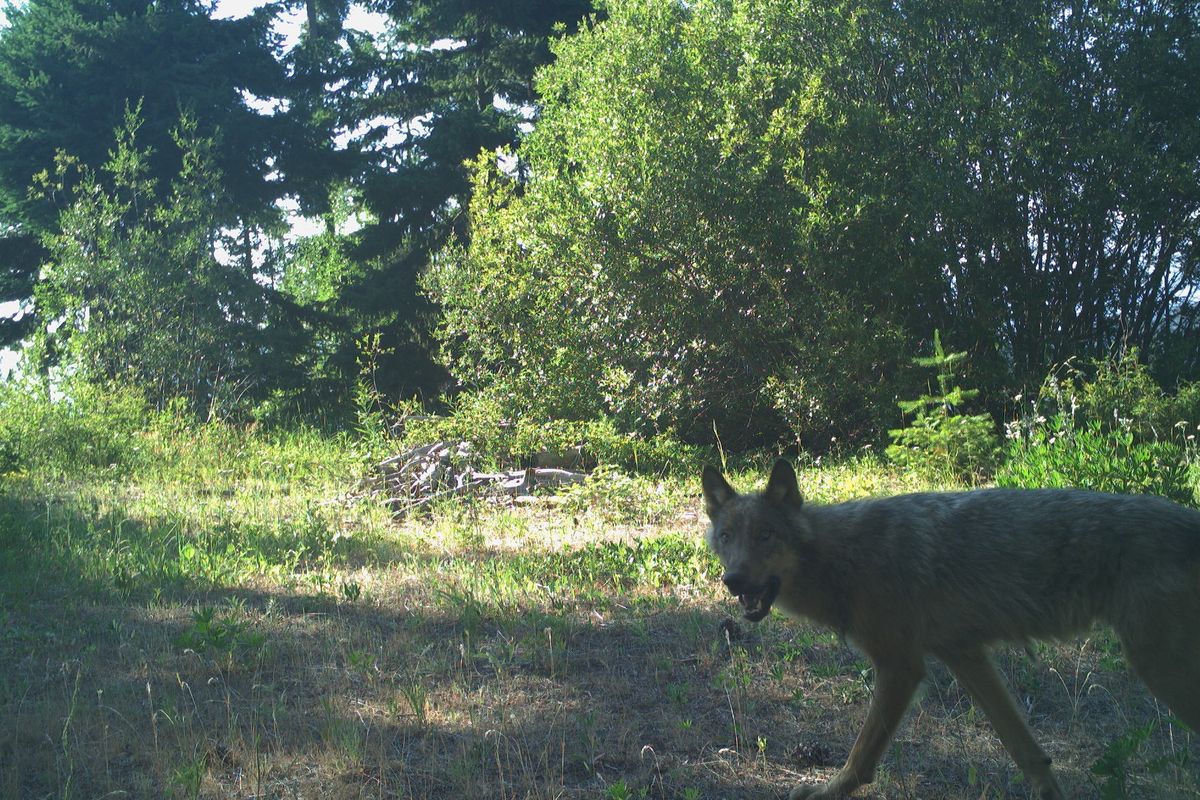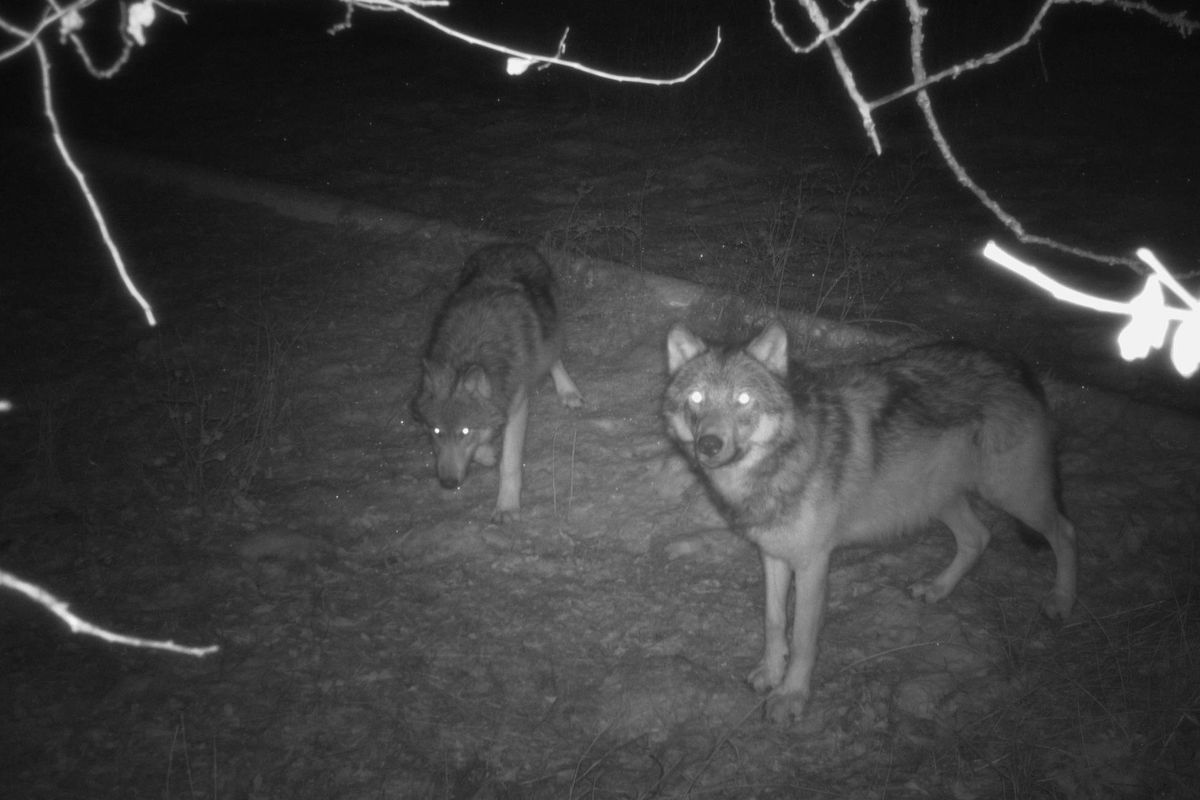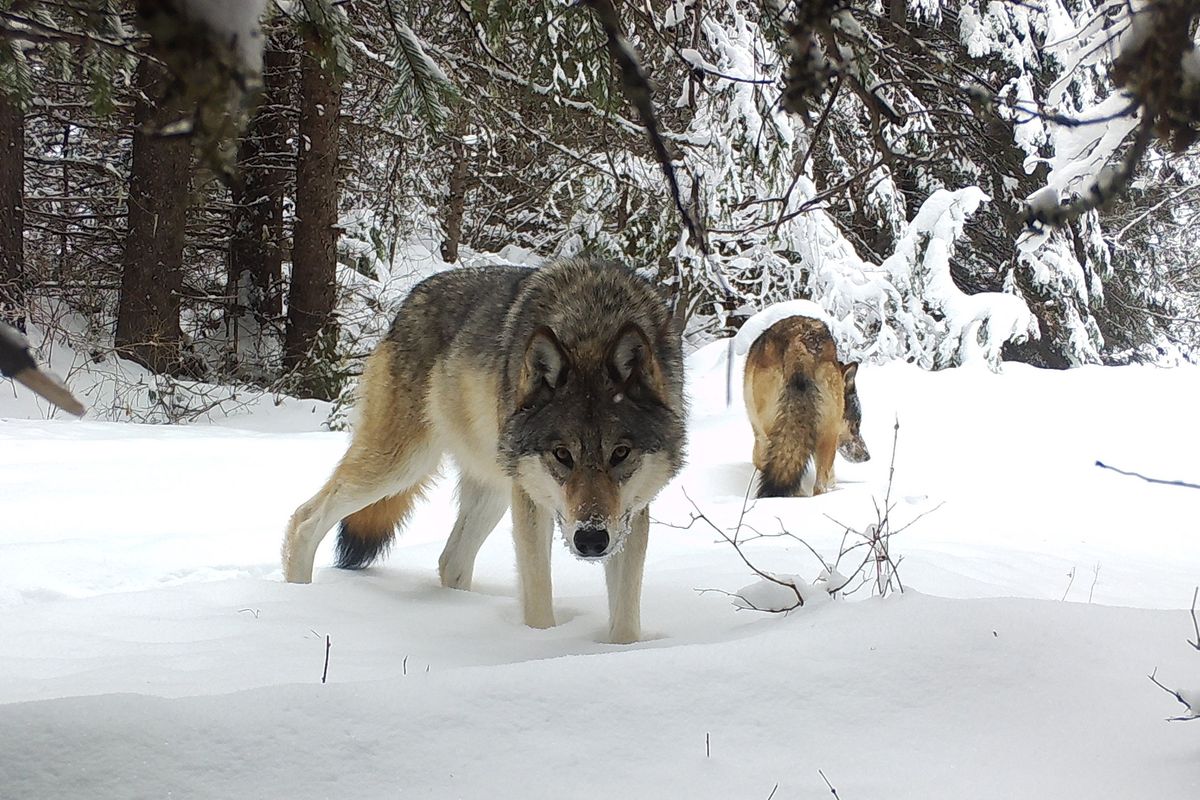Washington spends $1.4 million on wolves in 2021 as state population continues to grow
A wolf in the snow as seen on Jan. 1. The state of Washington has a minimum of 33 packs and 206 wolves. (Courtesy of WDFW)
There were a minimum of 206 wolves and 33 packs in Washington state in 2021, according to an annual survey conducted by state and tribal biologists.
Those numbers represent an increase of 16%, although the real year-over-year increase is likely smaller as the Colville Confederated Tribes did not survey wolves in 2019 or 2020. The tribes did survey wolves in 2021.
The information was presented at Saturday’s Washington Department of Fish and Wildlife Commission meeting.
There were 30 documented wolf deaths in 2021, including two that were killed by the state in response to livestock attacks, 22 that were legally killed by tribal hunters, four killed by vehicles and two deaths that are still being investigated, according to the report.
Meanwhile, wolves killed five cattle and inured eight, according to WDFW. Investigators determined wolves probably killed an additional two calves and injured six.
The state spent $1,421,393 on wolf management activities, including $111,649 in reimbursement to 30 livestock producers for nonlethal conflict prevention (range riding, specialized lighting and fencing), $205,969 for 23 contracted range riders, $20,866 to four claims for livestock losses caused by wolves, $19,957 for lethal removal operations in response to depredations on livestock and $1,062,952 for wolf management and research activities.
WDFW spent $1,554,292 on wolf management and recovery in 2020.
The survey is conducted annually and represents a minimum population estimate. State wolf coordinator Julia Smith said she was “thrilled to witness continued growth and expansion of Washington’s wolf population.”
“Although wolf-livestock interactions have remained consistent, we recorded the lowest number of livestock depredation incidents in the state since 2017 and removed the fewest wolves in response to conflict since 2015,” she said in an email.
“We’re committed to promoting the proactive use of nonlethal deterrents to minimize wolf-livestock conflict, and proud to demonstrate that our approach is working thanks to the dedication of livestock producers, non-governmental organizations assisting directly with livestock monitoring, and WDFW staff.”
As in years past, most of those wolves live in the eastern third of the state. Per the state’s recovery plan, wolves can only be delisted after 15 successful breeding pairs are documented for three consecutive years, or after officials document 18 breeding pairs in one year.
Under either scenario, the pairs have to be distributed evenly throughout the state’s three wolf management areas. The agency once predicted wolves would disperse throughout all three recovery zones by 2021.
Biologists gather information about wolves during the winter and early spring using a variety of methods, including tracking, camera traps, radio collared information and citizen reports. In 2021, state, federal and tribal biologists captured 17 wolves from 12 packs and monitored 29 unique radio-collared wolves from 20 packs.
Unlike in 2019 and 2020, the Colville Confederated Tribe conducted a wolf survey using the same methodology as WDFW.
In early 2019, the Colville Confederated Tribes removed limits on wolf hunting, allowing hunting year round. It is illegal to hunt wolves for non-Colville tribal members.
WDFW is in the process of a periodic status review of the wolf population. Depending on the outcome of that review, WDFW biologists could recommend changing the recovery goals. The WDFW commission – a nine-member appointed governance body – would have to approve any status change.
At the same time, the agency is accepting public comment on changes to the lethal-removal policy (see sidebar).
Wolves are federally protected in the western two-thirds of the state and on the state endangered species list in the eastern third of the state. For 13 months in 2021 and 2022, wolves were removed from the federal endangered species list. A U.S. District judge in California, however, ordered the wild canines back onto the list in February.
Wolves were eradicated from Washington and most of the western U.S., by the 1930s following a concentrated hunting, trapping and poisoning campaign.
Following reintroductions in Idaho and Montana, gray wolves naturally returned to Washington, with the first pack documented in 2008.
WDFW Commissioner Kim Thorburn from Spokane called the report “continued good news,” particularly combined with the population projection model that was recently presented to WDFW by University of Washington researchers.
“The population projection model predicts a sustainable wolf population in Washington into the foreseeable future under multiple scenarios, including current management, regulated harvest, disease outbreaks, decreased immigration and some increase in removals,” Thorburn wrote in an email. “Further, wolf-livestock conflict continues to result in few removals compared to other states, which can probably be attributed to our state’s good work on nonlethal deterrence.”


